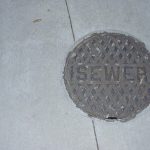Most households do laundry daily. While washing machines make this task much more accessible, they also come with the risk of water damage if something goes wrong. Leaky hoses, overflowing suds, and installation mishaps can lead to flooding, mold growth, and serious home repairs.
Preventing most washing machine water catastrophes only takes a few sensible precautions upfront and occasional maintenance going forward. By following these eight simple guidelines, you can do laundry safely for years without wet worries.
Eight simple steps for preventing washing machine water damage
1. Choose a Quality Washer
As with most appliances, cheaper washing machines often prove less durable and reliable over time than premium models designed for longer-lasting performance. Key aspects to compare across washers include:
Reputation for Reliability: Consult external review sites and experts who examine brand repair rates, quantify equipment lifespans, and suggest more (and less) reliable names.
Warranty Coverage-Seek at least one year of comprehensive warranties covering parts and labor. Extended water damage protections indicate higher-quality internal components and confidence in leak prevention.
Leak Detection Features – Many modern washers contain internal monitoring systems that automatically shut off water flows if abnormal seepage gets detected in the base, catching problems before flooding spills occur externally. This self-monitoring capability provides essential safeguards if away from home during cycles.
Investing a few extra dollars upfront in selecting durable washers with robust warranties prevents thousands in damages later on.
2. Install on Solid Level Flooring
For washing machines, installation matters as much as the equipment quality when preventing leaks. Two key factors include:
Stable Ground – Set washers on flat, structurally sound surfaces able to handle excess vibration during high-speed spin cycles without shifting positions creeping away from walls, opening potential tiny gaps between outlet tubes and drain entry points, allowing water to seep externally under pressure hoses intact still internally.
Precisely Use a spirit level tool and double-check that base units sit uniformly level side-to-side and front-to-back without observable tilting once slid into final positions. Even slight slopes place strain on internal tub components, slowly shifting them, creating failure points that ruin flooring underneath over time.
Take your time on installs – preventing leaks starts with sturdy foundations.
3. Elevate Machines Above Floor Height
Elevating washing machines a few inches above the lowest floor provides inexpensive insurance against specific leakage threats. Here’s why to consider lifters:
Flood Zones – Raising units above basement slab levels helps protect machines if groundwater seeps internally, given the heightened positioning, which is safe from typical flooding ranges.
Early Leak Detection-Subtle leaks evidently dripping underneath units appear noticeably sooner, sitting elevated rather than initially puddling unnoticed against waterproof floor materials.
Quick Drain Off—Any major mid-cycle internal gushing leaks exiting underneath cabinets quickly run off. Given the angled bases, the water does not pile deeply, sending it away externally faster before soaking drywall and pad materials underneath, amplifying damage.
Easy-to-install plastic or metal washing machine risers offer prudent protection, with warning and reactive time to catch crises before major consequences unfold.
4. Check Fill Hoses Yearly
While washing machine hoses appear innocuous, the attached water-fill lines degrade over the years, becoming brittle and prone to sudden rupturing and spraying wildly. Safeguard against hose failures through two simple steps:
Inspect Annually – Make appliances easy to access, allowing close physical inspection down the entire hose lengths, looking for cracks, bubbles, and crimps that indicate occasional wear. Replace any with concerning cracks, not risking devastating ruptures.
Upgrade Stainless Steel-When replacing older hoses, spend a few extra dollars selecting braided metal hoses that are 20x stronger than traditional rubber varieties. These hoses resist leaks over longer periods through durability. Consider flood-stop auto shutoff-enabled versions for total assurance.
Vigilance against outdated fail-prone equipment protects machines’ age.
5. Install Overflow Pans
Even quality washing machines experience occasional sudden overflows or internal ruptures eventually across years of usage, unable to react instantly before some leakage externally. Installing supplemental overflow pans provides an invaluable safeguard, catching surprise fluid releases and keeping directly off subflooring.
When positioning pans, ensure:
Deep Walls—The extra-deep containment walls hold over 3 gallons, safely confining significant sudden water dumps during entire wash cycles without topping edges.
Water Sensor Slots-Many pans provide pre-cut sensor wire routing channels, allowing leak detection plug installation and automatically shutting machines off if rising waters touch connected probes.
Graduated Drain Outlets- Some overflow basins contain centered drain holes that slowly release water externally rather than indefinitely collect it inside. This also prevents mold risks during downtimes.
Because accidents still happen despite quality equipment and vigilance, failsafe pans offer affordable redundancy against catastrophic leaks waiting to eventually occur intermittently.
6. Install Drain Pain Screens
While draining washing machine outflow appropriately seems straightforward, one often overlooked area prone to clogging problems comes from drain exit points underneath connecting via short discharge tubes into flooring waste pipes, sending further downflows. Here are preventative works best:
Attach Protective Screens-Connect simple elbow-shaped mesh screens onto drain hose outlets. These screens catch accumulated lint and debris directed down drains, slowly stopping up exit routes over months of usage.
Check Screen Frequently—While screens deter immediate outlet clogs, material accumulates externally over time, necessitating visual inspections every few months to clear away debris, ensure unobstructed ongoing flows, and preventively avoid backups.
Consider Pipe Cleaners-For deeper drain lines suspecting partial obstructions, flexible plastic drain cleaning snakes fed manually downstream provide ways to clear out mysterious clogs farther down, preventing backup flooding externally around washing machines that otherwise seem fine initially.
Unseen obstructions lie in wait within household drain plumbing poised to wreak havoc maliciously for the unprepared – install outbound washing machine screens, preventing disasters costing severe damage.
7. Shut Off Water Between Loads
Even while not actively running laundry, open washing machine water valves slowly leak small amounts externally, given years of mineral accumulation and valve seal wear that distort perfect closures once wall supply lines remain fully pressurized continually.
Reduce leakage risks through:
Install Shut-Offs – Attaching separate shut-off valves onto washing machine hookup lines allows quickly terminating all water supply instantly between laundering rather than relying on 95% closed aged valve seals prone to developing drips over decades estimated lifespans sidestepped easily using manual shutoffs for absolute leakage assurance positive shutoffs give.
Get Alerting Sensors – Shut off water valves internally using automatic watertight sensors capable of identifying even small moisture puddles on pan bases or storage cabinet bottoms, alerting homeowners of soaking situations needing addressing rather than assuming the best case absently allowing slow, silent damage accumulating undetected otherwise long term.
Err on the side of caution between operational cycles and cutoff suspicions flows completely utilizing separate shutoff valves, further stopping unanticipated leakage threats quietly happening out of site developing if not addressed thoroughly.
8. Wipe Seals After Every Load
While appearing fully watertight during active spinning wash cycles, residual water droplets cling around circular access door seals after finished runs, gradually degrading flexible gasket materials meant for water integrity over the years.
Combat deterioration through attentive care:
Open Doors Post-Run-Leaving round door seals pried slightly ajar after finishing accords crucial minutes for internal standing water drainage before closing access, keeping pathways dry immediately instead of swampy over 48 hours, accumulating eventually.
Wipe Seals and Surface-Manually wiping clean entire flat seal faces and surrounding surface areas eliminates all visible moisture left standing, removing future deterioration elements and significantly impacting lifespan maximization overall.
Leave door Open – During down cycles between scheduled laundry runs, leave door positions propped slightly, granting interior air circulation opportunities to dry residual dampness quicker rather than closed traps moisture and heat internally, working against longevity, equating more excellent finishes that much faster.
With easy habitual care consistently administered, machine access seals maintain elasticity for years, optimizing windowed leakage protection. Dry seals are better than deteriorating alternatives.
Tips to Extend Washer Lifespans
Several small maintenance practices help washing machines operate reliably over more extended periods before replacement becomes necessary:
Clean Interior Drum – Run monthly empty vinegar cycles preventing gradual soap scum accumulations internally, which can distribute cleaning agents unevenly onto fabrics washed, shortening optimal lifespans otherwise.
Inspect Hoses Yearly – Visually check the inlet and outlet tubing for bubble bulges, cracks, or extreme flexibility. Assess wear, possibly necessitating proactive swaps to avoid devastating ruptures down roads unexpectedly.
Clean Filter Quarterly – Removing coin traps and fabric filter blocking eventually stops proper drainage flows or machine agitation strength dropping gradually, which is noticeable over time and reliant upon debris-free paths functioning flawlessly.
Level Recalibration – Reconfirm level machine bases yearly as imperceptible garage or laundry room foundation settlings throw off delicate internal tub alignments, decreasing machine longevity substantially.
Tips for DIY Installs
Braving washing machine installation solo despite lacking professional trade skills increases leakage risks unnecessarily with special equipment and techniques available, simplifying projects for homeowners reasonably:
Buy adjustable fill hoses. Flexible steel inlet hoses in various lengths suit connecting appliances placed at various proximities from wall plumbing hookup locations, which would be challenging otherwise.
Use Hand Truck Carts-Properly lifting units prevent strains navigating stairwells or narrow passages, transporting purchased appliances safely onsite rather than dangerous tipping outcomes, and trying makeshift dollies absent proper load balancing designs.
Purchase Spirit Leveler Tools. It simplifies front-back and side-to-side leveling confirmation critical for proper washing machine orientations, decreasing internal mechanical failures and preventing eventual leak creation tendencies manifesting from continually uneven surface installations initially.
Conclusion
Doing laundry should not pose nerve-wracking water damage dangers despite involving substantial fluid volumes daily. Our washing machines easily handle years of uneventful churning fabric cleaning if proper precautions preempt problems beforehand.
Comparing reputable appliances possessing leak detection and durable parts provides protection foundations. Solid installation platforms coupled with elevated stands catch major failures above flooring alongside containment pans monitoring flows down external drains fitted with filtered screens and limiting clogs. Finally, appliances must run flawlessly, so attentive wiping care around gaskets and shutting water flows completely when not washing during run periods allows seals to work great without deterioration from unnecessary wetness alone.
Always contact your local plumber for any repair work.





